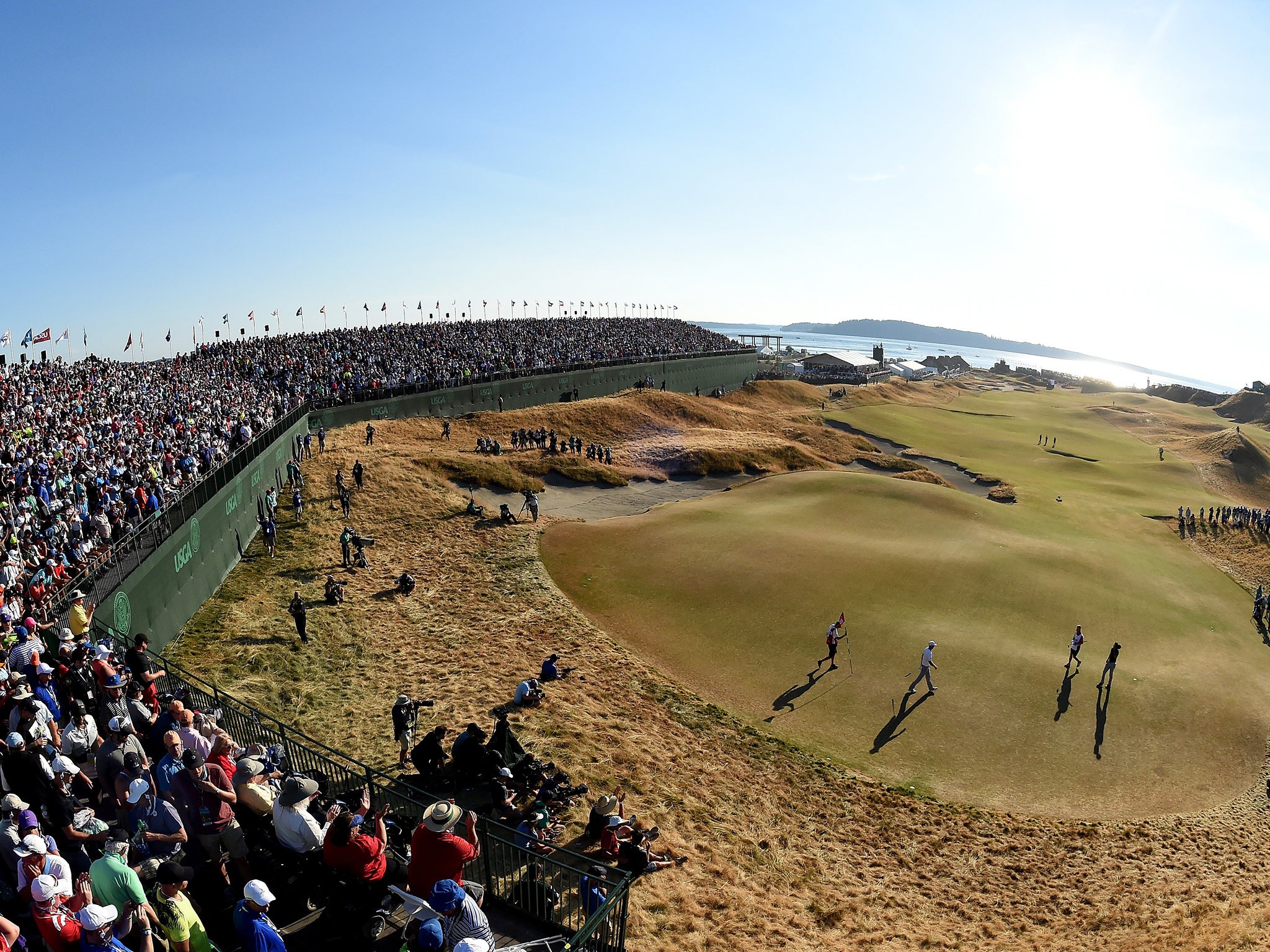US Open 2015: Chambers Bay looked so cool but as a skewed course played too cruel
The venue was decided more by chance than sporting excellence

If they come back to Chambers Bay in 20 years’ time Rory McIlroy will be fine with that. His was one of the more polite expressions of the negative sentiment that swirled around this venue, a stunning setting playing host to a great championship on a course that was a design concept too far.
You would choose to play it on PlayStation every time, or in a fourball with your mates. That would be cool. But as a championship to determine the best player, it fell down. And as a venue it paid too little heed to the needs of the spectator.
The United States Golf Association got lucky with a finale that produced more plot twists than an episode of EastEnders and a poster boy winner, just not for the right reasons. You want excellence to decide championships not chance. The balance at Chambers Bay was skewed too much towards the random variable and thus diminished the value of golfing skill and craft.

It is fine to punish bad shots but silly to mock the good with design features like cambered fairways at drivable par-fours and fantasy greens on which straight putts have no skin in the game. It was the condition of the putting surface that drew most criticism. Only the seventh and 13th were deemed to be of championship standard by the majority of the players.
This is how Billy Horschel felt about his emasculation on the greens, and he closed with a 67. “When you come to a championship tournament, obviously you’re going to find out who the best player is but if you are a really good putter, great putter, and they take that away from you, that’s the skill that you have above everybody else. I’ve hit a lot of really good putts that have bounced all over the world.”
The USGA recognised some of the errors by maintaining the 18th as a par-five for the last two days because it failed as a design with the tee box up, offering no landing area for the driver. They could not do much about the fairway at the par-four 16th, a hole that encourages the player to go for the green but makes it impossible to reach because of the cambered approach. Perfectly struck tee-shots simply feed off the front of the green into the sandy wastes down the right. That’s not golf.

McIlroy and John Senden were lucky that their putts of 70 and 60 feet respectively went in one after the other at the 13th, a green with a view. Had they found the cup at the eighth, a long, ugly slab of a hole with no other purpose other than to connect the seventh and the ninth, they would have met with silence since there was no spectator access.
Indeed, great swathes of the course were inaccessible to galleries, particularly along the fairways at four, five, six, seven, 13 and 14, which were cut into the hill at the far side of the complex. “Open” is a word that should apply to the venue as well as the competition. When Robert Trent Jones Jnr designed Chambers Bay he did not have the spectator in mind.
Join our commenting forum
Join thought-provoking conversations, follow other Independent readers and see their replies
Comments